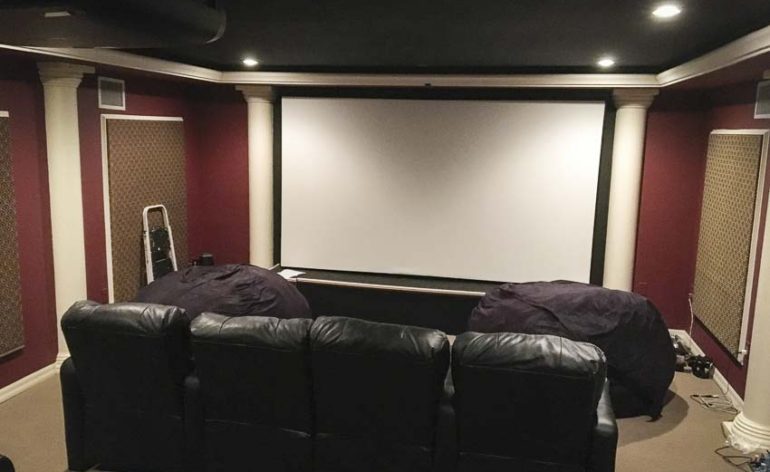Why You Shouldn’t Buy an ALR Screen
You’ve done the math and figured out you can get a much bigger picture for much less money if you buy a UST (Ultra Short Throw) projector. Once you get past 65″ to 75″, you are better off with a projector. But placing one at the back of the room is such a hassle! UST projectors fix that problem by allowing you to place the projector near the front wall just like a flat panel TV. If you’ve read any reviews of UST projectors, you would have heard that they work best with ALR screens. ALR (or Ambient Light Rejecting) screens will reject (i.e. no reflect) light from all angles except one. If you pair this type of screen with a UST projector, suddenly you have a projection setup that can work in a brightly lit room! Sounds fantastic, no? Well, we’re here to tell you that you might not need to buy an ALR screen. Here’s why.
Check out our XGIMI Aura UST 4k Projector Review
UST Projectors Don’t Have to be Paired with ALR Screens
First, let’s debunk a commonly held belief. When you buy a UST projector, you don’t need to also buy an ALR screen. ALR screens have been a thing long before UST projectors hit the market. ALR screens can be designed to reject light from any direction. With a traditional projector (that is placed across the room from the screen), an ALR screen will reflect the light from the direction of the projector but reject any light originating from the sides, top, or bottom of the screen. UST projectors can and do work just fine with a traditional screen (or a non-traditional one).

It’s All About Light Control
There is one reason to buy an ALR screen, and it’s not because you also bought a UST projector. You only need an ALR screen if you don’t have light control. Light control means that you can dim or eliminate light from your viewing environment. Do you have light switches? Have you installed curtains or blinds over your windows? Can you close a door? Then you have light control.
But even if you don’t have total and complete light control where you can black out your room at any time of the day, you need to think about your viewing habits. Do you really watch much TV during the day or are you like many people and really only retire to the living room to sit down and watch in the evening? If you are doing most of your watching when it is dark, even a modicum of light control will be enough.
Why You Should Avoid Buying an ALR Screen
There are two main reasons to try and avoid ALR screens. First and foremost is the cost. ALR screens are significantly more expensive than traditional screens. Expect to pay at least double for an ALR screen. Depending on the size of the screen and the quality of the light rejection technology, that difference can be much, much greater. The same money can be used to install light control with plenty left over for other home theater upgrades.
Second, ALR screens are very good at giving you a usable image when there is a lot of ambient light. But this comes at the cost of low-light performance. In a low-light environment, an ALR screen will exhibit hot-spotting (where part of the image is overly bright), sparkles, and non-uniformity of the image as you move around the room.
If you are thinking that you sometimes watch content during the day, so maybe an ALR screen makes sense, think twice. You want a screen that will give you the best performance for the majority of your viewing. If you watch 51% at night, then a regular screen is the better purchase.
Wrap Up
The belief that you need an ALR screen if you buy a UST projector just isn’t true. Sure, ALR screens have their uses. In high-light environments, they can be impressive. But if you are mostly watching at night, or if you have light control in your room, a normal screen is a much better purchase. Of course, if you have the money, you can get both. A wall-mounted ALR screen for daytime viewing and a drop-down traditional screen for night-time viewing. But that’s up to you and how much you are willing to spend to get the best of both worlds.


